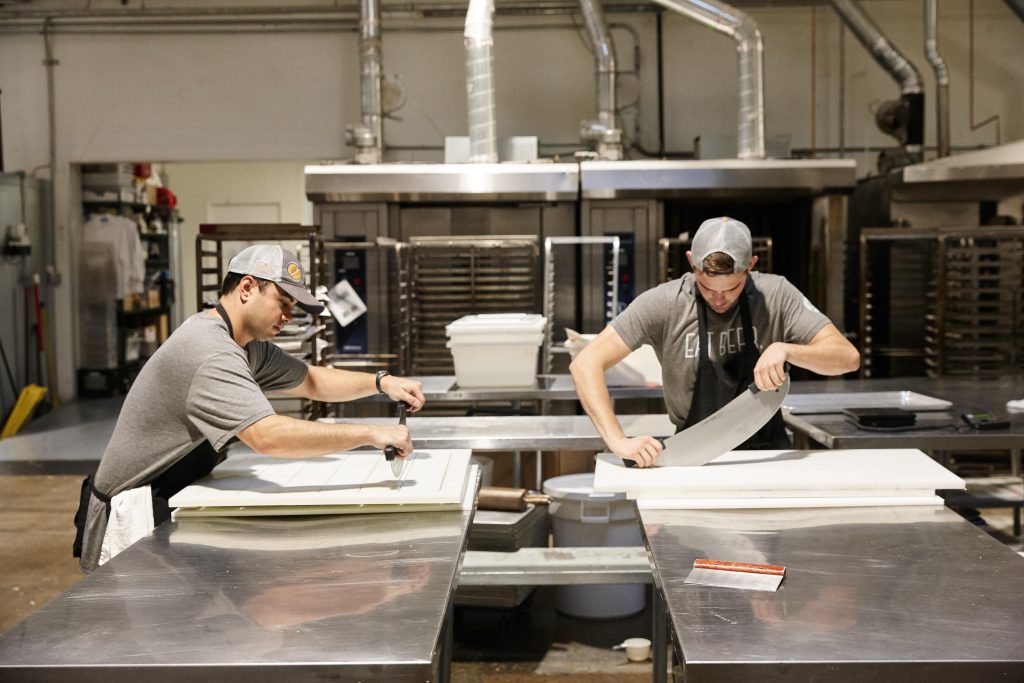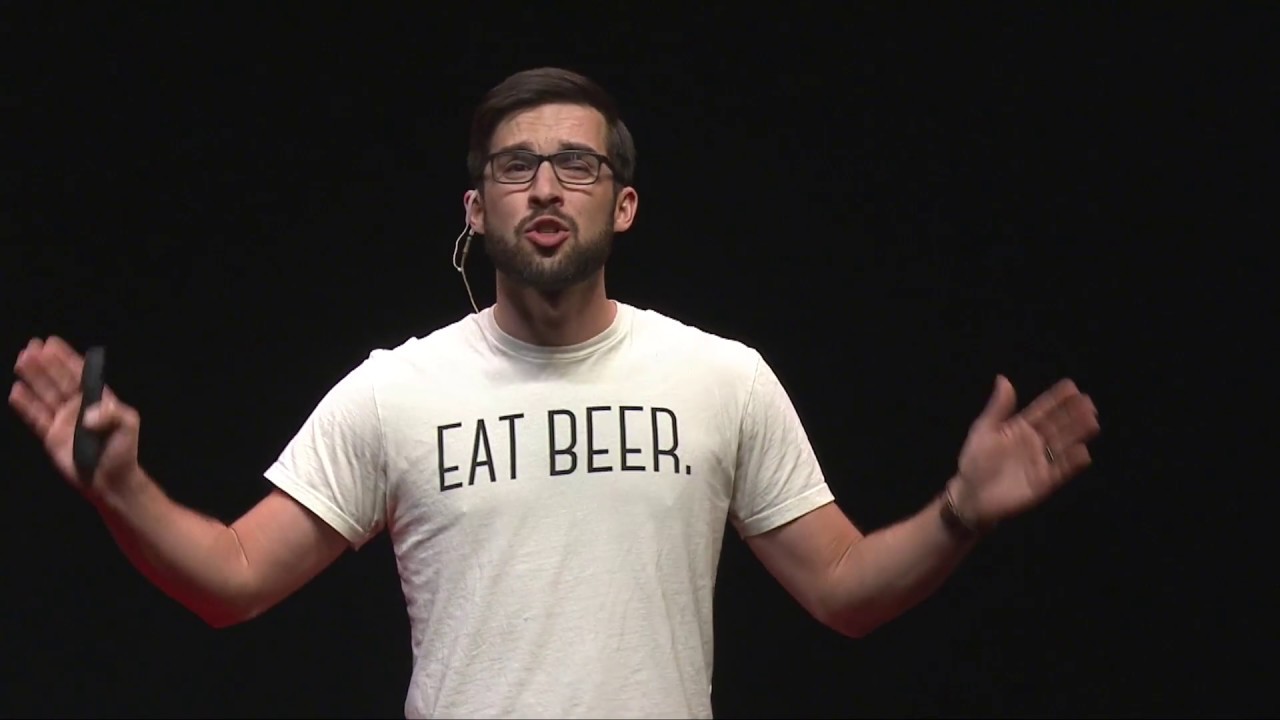A Conversation with Dan Kurzrock
Outpost: Upcycled Foods obviously comes from a necessity for more sustainable food sources in our changing climate and economy. As an innovator, what were your first forays into this space? Tell us how you got started!
When I began to brew beer at the University of California Los Angeles in 2009 as an undergrad, my eyes were opened to how much food I was leaving behind with each batch. It takes on average about 1-pound of grain to make a 6-pack of beer—and the process only takes the sugars from the grain, leaving a lot behind! After discovering how tasty and nutritious the post-brewed grains were, I began to incorporate them into loaves of bread, and then sell them to cover my homebrewing expenses. As a sustainability nerd, I had heard the term “upcycling” used to describe projects that used the waste materials from one industry to create a new use for another industry. That’s when I saw the potential for “upcycled food” and my own brewer’s spent grain (BSG) was where it started—ReGrained was born!
We elevated the industries awareness that “spent” grains have the potential for a delicious second life. Over the years we also discovered far more potential for new upcycled food supply chains than we could have ever imagined beyond brewer’s grains including coffee leaves, cacao fruit, and more. We have become a discovery engine for nutritious and delicious ingredient solutions that continue to be left off the table. To reflect this, ReGrained today has been folded into an umbrella company Upcycled Foods Inc. to meet the growing demand for upcycled food innovation as a collaborator, development partner, and ingredients supplier.
Can you shed some light onto the process of determining what food production by-products can be upcycled?
There is so much potential for upcycling waste streams into ingredients that simultaneously maximizes the resources it took to grow virgin food sources and reduces our need for them. While we want to see ALL food reach its highest and best use, our company is selective in determining what foods we choose to move forward commercially. In doing so, we evaluate a number of factors, but start with evaluating the prospective material itself. Some of the basic questions include:
What is its flavor, nutritional composition, and functional attributes?
How much supply is available, how consistently, and from where?
What processing is required to valorize it into a food safe and desirable new ingredient?
What is the market opportunity for how that new ingredient can be used?
How energy intensive is the valorization?
How much transportation footprint is required?
Are there specific foods that you’ve been working with (that you can speak to us about) which you have goals of bringing to market, just just aren’t quite there yet?

We continue to be blown away by the application versatility of our upcycled ingredients, and continue to explore, ideate, and learn. We have dozens of projects in development with brands across a wide range of categories that cover nearly every aisle of the grocery store. We also work with food service operators on fresh concepts for menu items, such as pizza, sandwich breads and various desserts. All the projects with large players are under strict NDA, but here are a few examples that we can talk about:
Doughp is an edible and bakeable cookie dough brand who use ReGrained SuperGrain+® in their “Brownie Beast” flavor. This flavor launched in April 2021 and to date remains one of their best-sellers.
Stone and Skillet is an English muffin brand that uses ReGrained SuperGrain+® in a delightful new recipe, launching later this quarter.
Atoria’s is a family-owned bakery that has developed some incredible pitas and lavash with a few items launching later this quarter.
Stay tuned to more news—we also have a national retailer launching a new bread item, plus other companies working on pasta, snacks, baking mixes and more.
Beyond the ingredients, can you tell us a bit about Upcycled Foods’s impact on the growing community?
When we started over 10 years ago, no one was talking about upcycled food in the mainstream food industry and you were hard-pressed to find any products marketed as upcycled. So, we started a line of snack puffs and nutrition bars to demonstrate proof of concept. I also began approaching the media, speaking at events, and basically talking to anyone who would listen! And I’ve been evangelizing the upcycled food movement ever since.
In 2019, we were one of nine co-founders of the Upcycled Food Association, an industry non-profit that has grown to over 250+ members in less than three years. We were integral to helping establish the Upcycled Certified™ standard that has certified more than 320 products since June 2021 and upcycled nearly 1 billion pounds of food waste.
On Earth Day 2022, we pledged to upcycle more than 10 million pounds of food by 2025, and we are well on our way.
We also support Food Shift, a local food waste recovery non-profit. To replace Food Shift’s loss of catering revenues due to the pandemic, and to hire back staff we provided professional guidance in upcycled product innovation and donated raw materials for them to a create a new dog treat product, PAWstiive Bones.
Upcycled Foods, Inc. is a proudly certified Public Benefit Corporation and 1% For The Planet member. We’re also active in ReFED and The Ellen MacArthur Foundation to support the end of food waste and building a circular food economy.
From the outset, what have been some of the biggest challenges for you, and how did you overcome them?
We knew we were starting with a great idea, but that building it into a great business would be a process. While we identified that the largest opportunity for impact would be to create an ingredient business that would connect the dots between the brewers’ grain supply chain and food manufacturers, we initially had no idea how we would process it safely and efficiently at scale. This supply-side challenge is what led to our research partnership with the United States Department of Agriculture and ultimately our patented technology.
On the demand-side of the model, we also had the unique opportunity to pioneer the various applications for how our proprietary ingredients could be used. Fortunately, we continue to be blown away by the versatility, but we had a lot to learn. For example, although the ingredient is derived from barley and thus naturally contains gluten, the gluten’s functionality is extracted during the brewing process. So, for bakery applications as an example, it was important to not only optimize for the right inclusion ratio to deliver the great nutrient density and flavor we bring to the table, but also to optimally blend with the other ingredients to deliver on texture.
What advice would you give to the everyday consumer as to how they can help make an impact? Brands to look out for and resources to get better informed.
Did you know that 52% of consumers report an increased awareness of the environmental impact their food choices representwhile consumer consciousness of the positive impact food waste mitigation has on the climate crisis has grown 71% since 2019.
And consumers have rapidly begun to seek-out upcycled foods and beverages. In 2021, Mattson – one of the leading innovation companies in the U.S. – discovered that 57% of consumers indicated that they intend to specifically buy more upcycled food. That’s huge! What’s more, 54% of survey respondents said that the Upcycled Food Association certification logo increased their purchase intent, ranking higher than Non-GMO and Regenerative Organic.
So, my first suggestion is for people to seek the Upcycled Certified™ mark and other trusted verified claims (by third parties) when making purchase decisions. This simple action goes a long way to help fight climate change!
There is a wonderful directory of certified foods and beverages on the Upcycled Food Association website. Groceries retailers, such as Hive, Whole Foods, and Walmart, have begun to identify purpose-driven brands, including sustainably minded products.
1 International Food Information Council, 2022
2 Spoonshot “The Potential of Peels As Sustainable Consumer Products”
3 Mattson Proprietary Research: “Upcycling: The Opportunity,” April 2021
4 INNOVA Market Insights, 2021
Give yourself a magic wand – you’ve achieved success beyond your wildest dreams. In 10 years, what’s Upcycled Foods’s impact on the world?
That we’ve helped ensure all food go to its highest and best use—feeding people!
This dream requires a total overhaul of our food system, something The Ellen MacArthur Foundation coined “the big food redesign.” We must create a circular economy that pairs upcycling of food waste streams with our allies focused on regenerative agriculture that prioritizes soil health. Together, we will forge a new path to design a better, more resilient food system. Let’s better align the food we eat with the planet we love, and move onward and upward, together!



